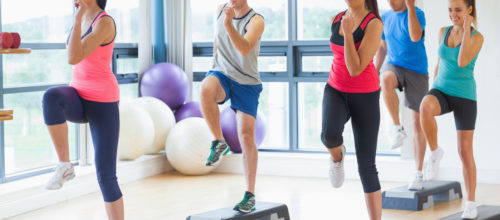
American Heart Association Recommendations for Physical Activity in Adults
Research has linked being inactive and sitting too much with higher risk of heart disease, type 2 diabetes, colon and lung cancers, and early death. Physical activity decreases your risk of weight gain, chronic disease, dementia and depression. It is also linked with better sleep, memory, balance and cognitive ability. It is one of the most important things you can do for your health and well-being.
It is clear that being more active benefits everyone and helps us live longer, healthier lives. The simplest way to get moving and improve your health is to start walking. It’s free, easy and can be done just about anywhere, even in place.
Any amount of movement is better than none. You can break it up into short bouts of activity throughout the day. Taking a brisk walk for five or ten minutes a few times a day will add up.
American Heart Association Recommendations for Adults:
Fit in 150+
Get at least 150 minutes per week of moderate intensity aerobic activity or 75 minutes per week of vigorous aerobic activity (or a combination of both), preferably spread throughout the week. Gain even more benefits by being active at least 300 minutes (5 hours) per week.
If you are new to exercise, you can work up toward the recommended amount by increasing your time as you get stronger. Set reachable goals for yourself.
With moderate intensity aerobic activity, your heart will beat faster and you’ll breathe harder than normal, but you’ll still be able to talk.
Examples of moderate-intensity aerobic activities:
- Brisk walking (at least 2.5 miles per hour)
- Water aerobics
- Dancing (ballroom or social)
- Gardening
- Tennis (doubles)
- Biking at slow speeds (< 10 miles per hour)
Vigorous intensity activities will push your body a little further. They will require a higher amount of effort. You’ll probably get warm and begin to sweat. You won’t be able to talk much without getting out of breath.
Examples of vigorous-intensity aerobic activities:
- Hiking uphill or with a heavy backpack
- Running
- Swimming laps
- Heavy yardwork like continuous digging or hoeing
- Tennis (singles)
- Cycling 10 miles per hour or faster
- Jumping rope
Move More, Sit Less
Get up and move throughout the day. Any activity is better than none. Even light-intensity activity can offset the serious health risks of being sedentary.
Add Intensity
Moderate to vigorous aerobic exercise is best. Your heart will beat faster, and you’ll breathe harder than normal. As you get used to being more active, increase your time and/or intensity to get more benefits.
Add Muscle
Include moderate- to high-intensity muscle-strengthening activity (like resistance or weight training) at least twice a week.
In general you want to move more, with more intensity, and sit less.
If you have a chronic condition, injury, or disability, talk with your healthcare provider about what types and amounts of physical activity are right for you before making too many changes. Get started today by simply sitting less and moving more, whatever that looks like for you.
Source:
https://www.heart.org/en/healthy-living/fitness/fitness-basics/aha-recs-for-physical-activity-in-adults
